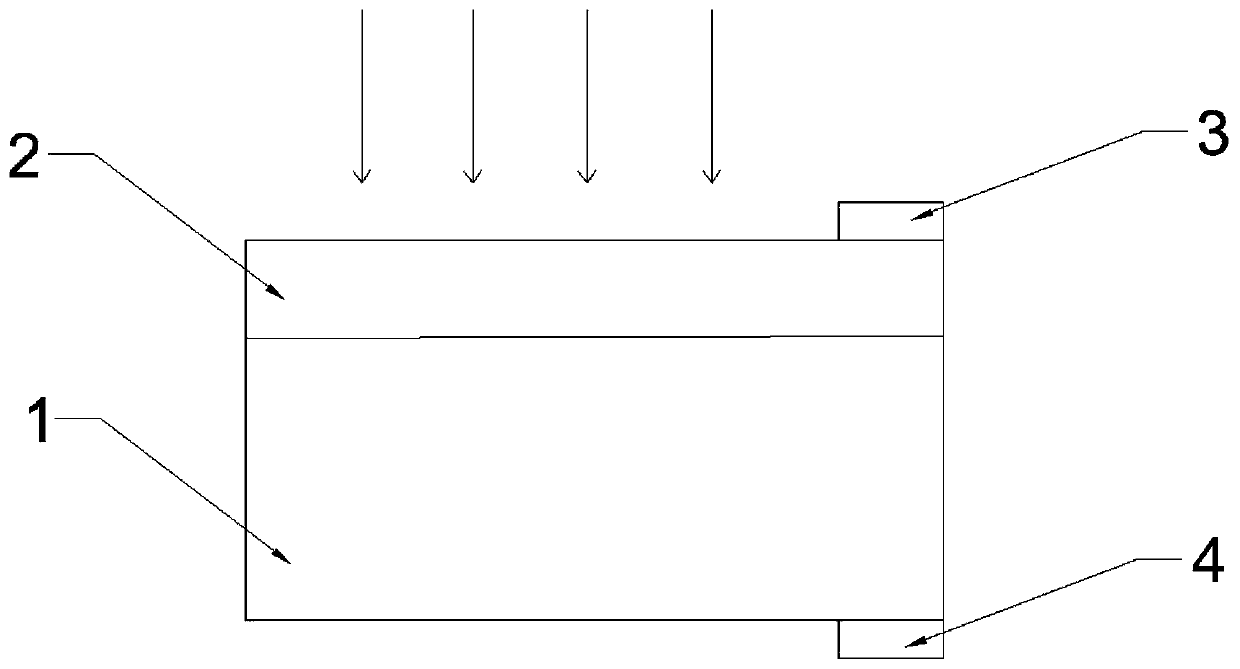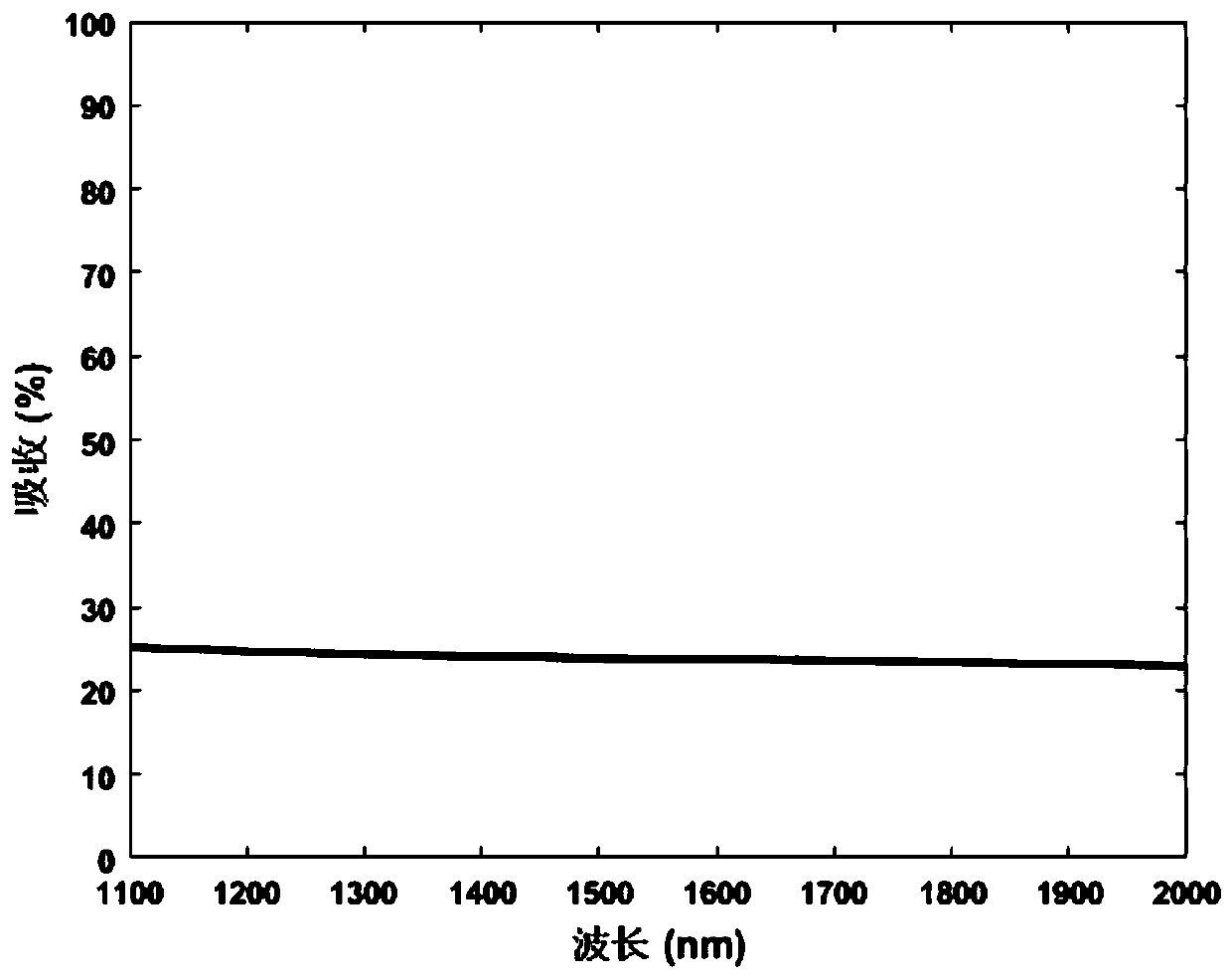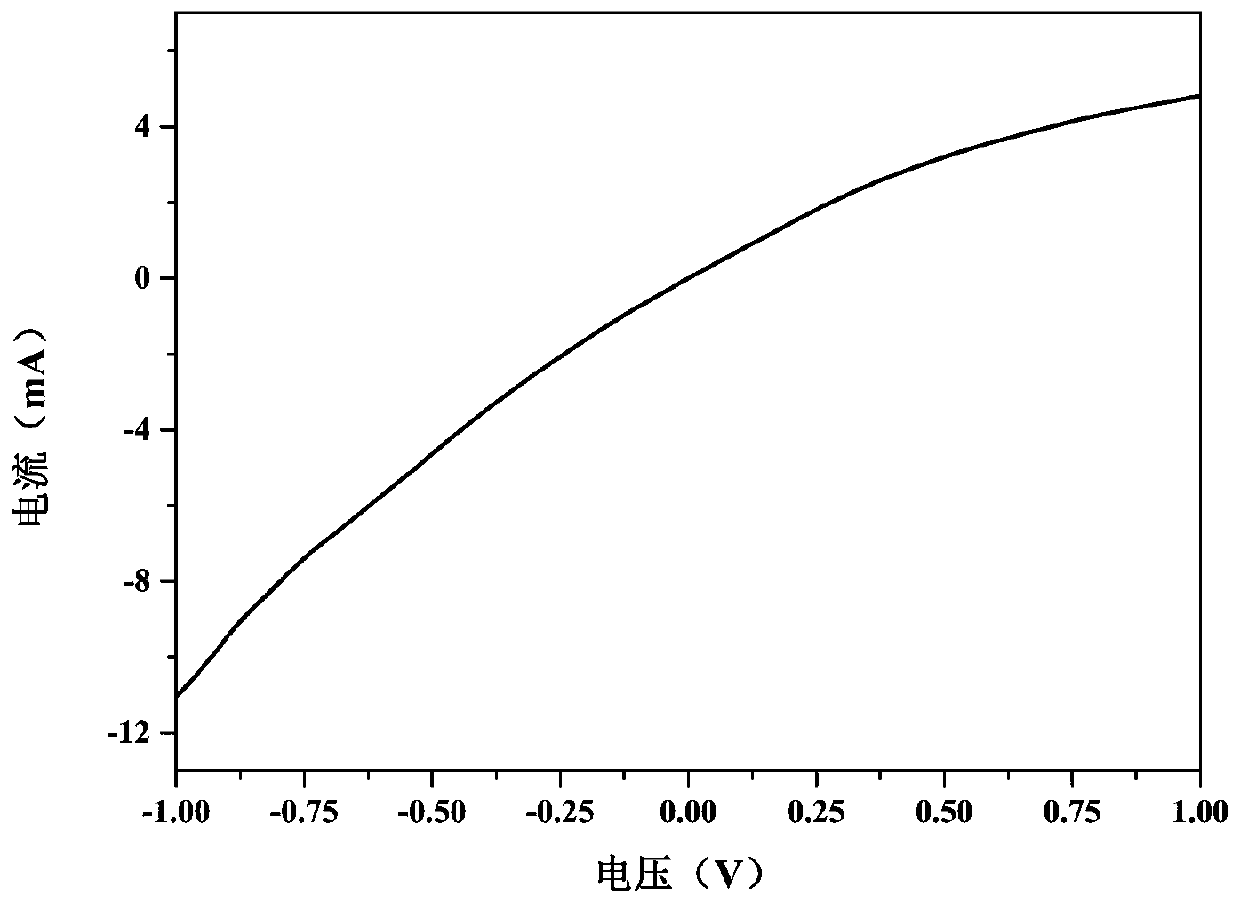Ultra-thin film infrared broadband thermoelectronic photoelectric detector
A technology of photoelectric detectors and thermal electrons, which is applied to photometry, circuits, and electrical components using electric radiation detectors. and polarization-insensitive, easy-to-prepare effects
- Summary
- Abstract
- Description
- Claims
- Application Information
AI Technical Summary
Problems solved by technology
Method used
Image
Examples
Embodiment
[0030] Such as Figure 1-4 As shown, an ultra-thin-film infrared broadband thermal electron photodetector is composed of a silicon substrate 1, a metal film 2, a top conductive electrode 3 and a bottom conductive electrode 4, and the upper end of the silicon substrate 1 is a metal The thin film 2, the metal thin film 2 and the silicon substrate 1 are respectively provided with a top conductive electrode 3 and a bottom conductive electrode 4.
[0031] The loss of hot electrons transported to the Schottky interface in metals can be described by an exponential decay model, where L is the transport distance of hot electrons and λ is the mean free path of hot electrons. When the metal thickness is much greater than the mean free path, the generated hot electrons will be lost in thermalization before reaching the Schottky interface, resulting in no current generation in the system. Compared with the traditional thermal electron photodetector, the technical proposal constructs a met...
PUM
| Property | Measurement | Unit |
|---|---|---|
| Thickness | aaaaa | aaaaa |
Abstract
Description
Claims
Application Information
 Login to View More
Login to View More - Generate Ideas
- Intellectual Property
- Life Sciences
- Materials
- Tech Scout
- Unparalleled Data Quality
- Higher Quality Content
- 60% Fewer Hallucinations
Browse by: Latest US Patents, China's latest patents, Technical Efficacy Thesaurus, Application Domain, Technology Topic, Popular Technical Reports.
© 2025 PatSnap. All rights reserved.Legal|Privacy policy|Modern Slavery Act Transparency Statement|Sitemap|About US| Contact US: help@patsnap.com



